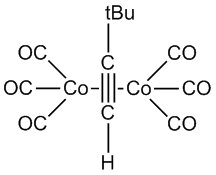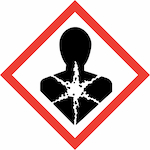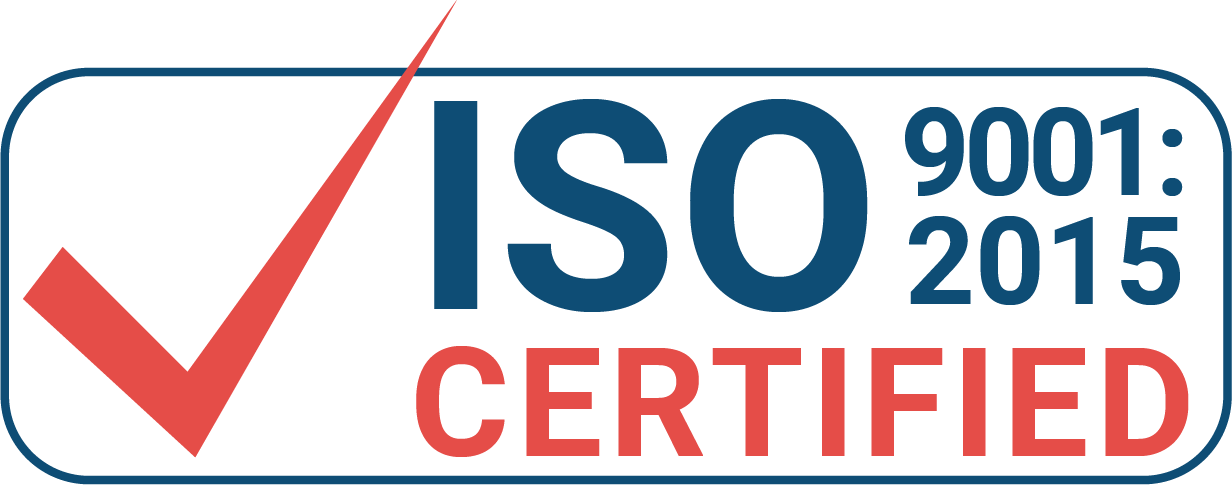(3,3-Dimethyl-1-butyne)dicobalt hexacarbonyl
Synonym: Dicobalt Hexacarbonyl Tert-ButylAcetylene, Dicobalt hexacarbonyl t-butylacetylen, Hexacarbonyl(3,3-dimethyl-1-butyne)dicobalt, CCTBA
CAS Number 56792-69-9 | MDL Number MFCD00054408

(3,3-Dimethyl-1-butyne)dicobalt hexacarbonyl, also known as CCTBA or dicobalt hexacarbonyl t-butylacetylene, is a dark red liquid with the molecular formula C₁₂H₁₀Co₂O₆ and a molecular weight of 368.07 g/mol. This compound, with a high purity of 99.90% determined by integration NMR, is widely used in organometallic chemistry, particularly in catalytic processes and materials science.
This cobalt-based compound is highly reactive and sensitive to air, which requires it to be handled and stored in air-free, inert conditions. The use of sealed containers and inert atmospheres like nitrogen or argon is recommended to prevent decomposition and preserve its reactivity. The compound is often used in chemical vapor deposition (CVD) and other specialized applications where cobalt complexes play a critical role.
Dicobalt hexacarbonyl t-butylacetylene is commonly employed as a catalyst or precursor in organic synthesis, particularly in reactions involving the formation of carbon-carbon bonds. Its ability to participate in metal-mediated transformations makes it valuable in both academic research and industrial applications. Additionally, it is used in advanced material development, including coatings and high-performance materials.
This compound presents several health hazards, and proper precautions are necessary when handling it. It is classified as flammable (H227), harmful if ingested (H302), absorbed through the skin (H312), or inhaled (H332). It can also cause skin irritation (H315), eye irritation (H319), and may trigger allergic skin reactions (H317). Long-term exposure can pose more serious risks, including respiratory sensitization (H334) and possible carcinogenicity (H351). Therefore, the use of personal protective equipment such as gloves, goggles, and respirators is essential, along with adequate ventilation.
CCTBA, or dicobalt hexacarbonyl t-butylacetylene, is a highly reactive and versatile compound used in catalysis and material science. Its sensitivity to air and hazardous nature necessitate careful handling and storage, but its utility in advanced chemical processes makes it a valuable tool in both research and industry.
(3,3-Dimethyl-1-butyne)dicobalt hexacarbonyl has been used as a precursor of Co films deposited by plasma-enhanced atomic layer deposition (PEALD) for Cu direct plating. The electrical properties of PEALD Co films of sub-20 nm thickness were determined by assessing continuities, morphologies, and impurities. To decrease the resistivity of Co films, a TaNx substrate was pre-treated with H2 plasma and the flow rate of H2 gas during CCTBA feeding and reactant feeding pulses was increased. Co films were deposited on a 3 nm-thick TaNx-covered SiO2 substrate with 24 nm-deep trenches, and Cu direct plating was successfully performed under conventional conditions. Cobalt is an important component of thin layers used in microelectronics like magnetoresistive devices, integrated circuits as well as lithium battery technologies and spintronics. See links below
Ereztech manufactures and sells this product in small and bulk volumes. Glass ampules, bottles, and metal ampules or bubblers are available for packaging. For additional analytical information or details about purchasing (3,3-Dimethyl-1-butyne)dicobalt hexacarbonyl contact us at sales@ereztech.com
Safety information
| UN | NA 1993 |
| Hazardous class | 3 |
| Packing group | III |
| Pictograms |   |
| Signal word | DANGER |
| Hazard statements | H227-H302-H312-H315-H317-H319-H332-H334-H351-H361-H412 |
| Precautionary statements | P203-P210-P223-P260-P264 + P265-P270-P271-P272-P273-P280-P284-P301 + P317-P302 + P352-P304 + P340-P305 + P351 + P338-P317-P318-P330-P332 + P333 + P317-P337 + P317-P342 + P316-P362 + P364-P370 + P378-P403-P405-P501 |
| Transport description | Combustible liquid, n.o.s. (Dicobalt hexacarbonyl tert- butylacetylene) |
| In TSCA registry | No (sold for research and development usage only) |
First Aid Measures
| General advice | Consult a physician. Show this safety data sheet to the doctor in attendance. Move out of the dangerous area. |
| Eye contact | Rinse thoroughly with plenty of water for at least 15 minutes and consult a physician. |
| Skin contact | Wash off with soap and plenty of water. Consult a physician. |
| Inhalation | If breathed in, move person into the fresh air. If not breathing, give artificial respiration. Consult a physician. |
| If swallowed | Do NOT induce vomiting. Never give anything by mouth to an unconscious person. Rinse mouth with water. Consult a physician. |
Certificates of Analysis (CoA)
If you don’t see the needed lot of (3,3-Dimethyl-1-butyne)dicobalt hexacarbonyl below please contact customer support at sales@ereztech.com
Lot# 005/537 Lot#013/013 Lot#013/014 Lot# 031/422 Lot# 022/023 Lot# 017/250 Lot# 017/251 Lot# 017/252 Lot# 017/253 Lot# 017/254 Lot# 017/255
External identifiers for CCTBA
| Pubchem CID | 90473603 |
| SMILES | CC(C)(C)C#C.[C-]#[O+].[C-]#[O+].[C-]#[O+].[C-]#[O+].[C-]#[O+].[C-]#[O+].[Co].[Co] |
| IUPAC Name | carbon monoxide; cobalt; 3,3-dimethylbut-1-yne |
| InchI Identifier | InChI=1S/C6H10.6CO.2Co/c1-5-6(2,3)4;6*1-2;;/h1H,2-4H3;;;;;;;; |
| InchI Key | ZJCVAZZKJPVOPY-UHFFFAOYSA-N |
Known applications and external links
- Jae-HyungParkaDae-YongMoonaDong-SukHanaYu-JinKangaSo-RaShinbHyung-TagJeonbJong-WanPark Plasma-enhanced atomic layer deposition (PEALD) of cobalt thin films for copper direct electroplating. Surface and Coatings Technology Volume 259, Part A, 25 November 2014, Pages 98-101.
- G.A. Seisenbaeva, E.V. Suslova, M.Kritikos, V.G. Kessler, L.Rapenne, M.Andrieux, F. Chassagneux, S.Parola, J. Mater. Chem., 2004, 14, 3150-3157, “Purposeful construction versus self-assembly in approaches to single source precursors of spinel materials. Synthesis, structure and stability studies of MIIAl2(acac)3(OiPr)4(OAc), MII = Mn, Co, Zn – a new class of heterometallic heteroleptic alkoxide complexes”
With (3,3-Dimethyl-1-butyne)dicobalt hexacarbonyl other customers often ask:
- Dicobalt Octacarbonyl (stabilised with 1-5% Hexane)
- Cobalt tricarbonyl nitrosyl
- Bis(cyclopentadienyl)cobalt
- Dicarbonylcyclopentadienylcobalt
Ereztech synthesizes and sells additional CO-compounds.
To purchase (3,3-Dimethyl-1-butyne)dicobalt hexacarbonyl contact us at sales@ereztech.com



